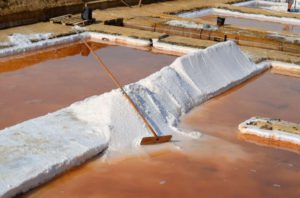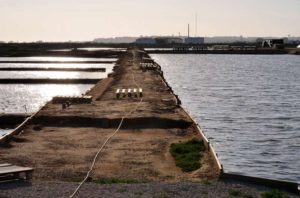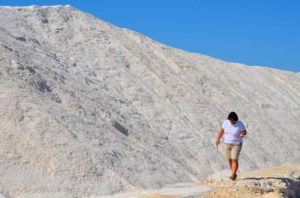Salt Pans
Salt pans are a common sight in the region, since Algarve is so intertwined with the history of salt. The ancient technology adapted to the landscape of the Ria Formosa turns the salt pans into outdoors chemistry labs. These are an important and humanized environment for several species of birds and microscopic beings…
The salt pans that paint the landscape white, in spaces that are still used today by an ancient activity, which takes advantage of the immense Algarve coast to produce high quality sea salt, whose purity and nutritional value are internationally recognized.
In the municipalities of Olhão, Tavira and Castro Marim there are three important centers of salt pans located in the Sapal de Castro Marim Natural Reserve, in Tavira and in Quinta do Ludo, in the heart of the Ria Formosa Natural Park. A labyrinth of channels guides the seawater, which flows into small, shallow tanks where it rests until the heat of the sun evaporates the water, leaving the translucent crystals to shine. With a privileged geographical and geological situation, these salt gardens are the meeting point between the fresh water of the river and the salt water of the Atlantic, thus bringing together the necessary conditions for the creation of a natural product, which preserves marine and mineral nutrients. Natural marine nurseries that generate economic use, while providing ecological balance and the preservation of species in the marsh areas of natural parks. Due to the contrast between the sparkling white and the blue of the sea, the picturesque work, which form unusual landscape.
The first references to the production of sea salt in the village of Castro Marim date back to the 19th century. VIII BC, concerning the activities of the Phoenicians. The saltworks grid, as we know it today, was brought by the Romans in order to optimize the production of sea salt, a fundamental ingredient in the preparation of the famous “garum” (fish in brine), which was exported throughout the empire. In the Kingdom of Portugal, it was King João I who allowed its export, making salt production one of the main activities of the kingdom, which served to finance the maritime discoveries.




